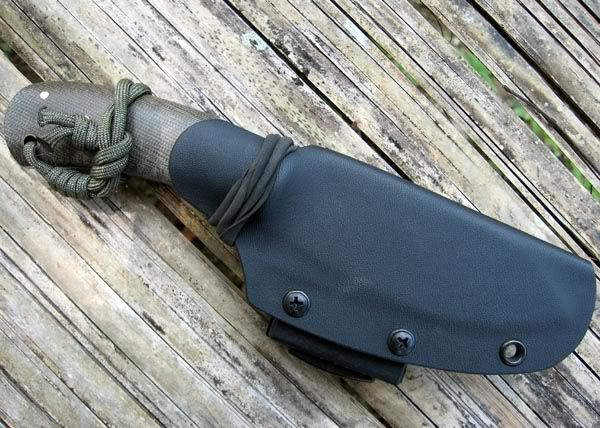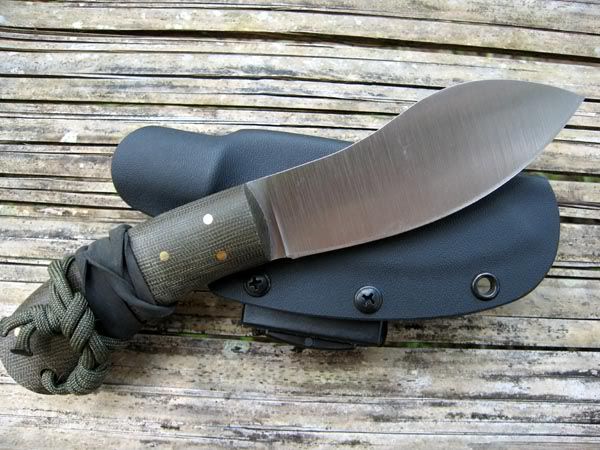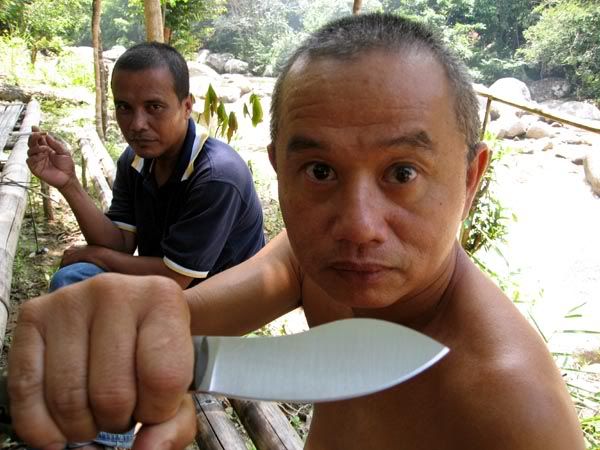 The modern Nessie made by Siegle
The modern Nessie made by Siegle Form follows function - My jungle camp knife
Form follows function - My jungle camp knife Ah Pan, my buddy showing off the Nessie in kg Halak, Gua Musang, Kelantan
Ah Pan, my buddy showing off the Nessie in kg Halak, Gua Musang, KelantanThe Nessmuk has been around for more than a century. Popularised by outdoor columnist George Sears, this knife has seen some frontier action in the North American Far West.
What I like about Sear's design, is its functionality. With a blade length of 4", this is an ideal field tool for preparing food as well as some light cutting chores at camp.
I believe that the original Nessmuks are hollow-ground for strength and durability. As recent as two years ago, I commissioned knifemaker Bill Seagle to make me a Nessmuk in high speed steel.
Its the only piece I believe, that utilised the S30v stainless steel. It has a good edge retention quality and well, I must praise Mr Siegle for his awesome work with the grinder.
His knives are hair-popping sharp.
The Nessmuk was used in Kelantan for food preparation. While at home, I was impressed by its ability to 'shave' off a young coconut shell.
My only beef with the knife, was the sheath. Its loose and rattles a lot. Something which can be fixed by heating up its thermoplastic shells.
This is the only Siegle-made knife left in my keeps and well, having seen what it has done and can do, it'll be a keeper!












No comments:
Post a Comment